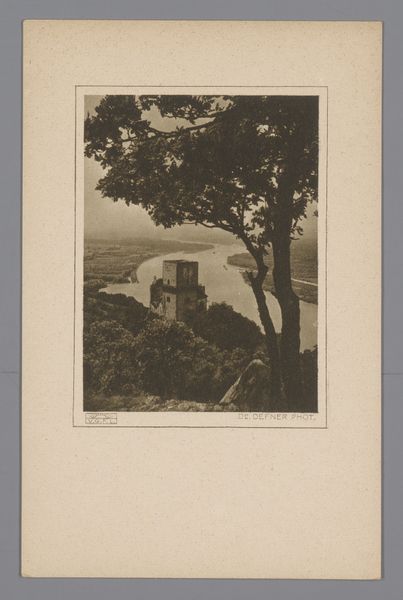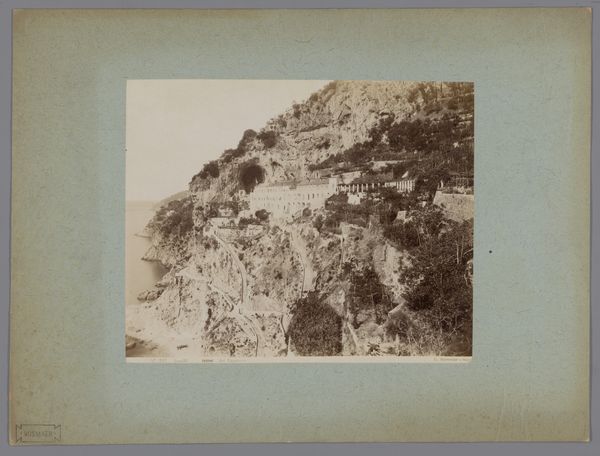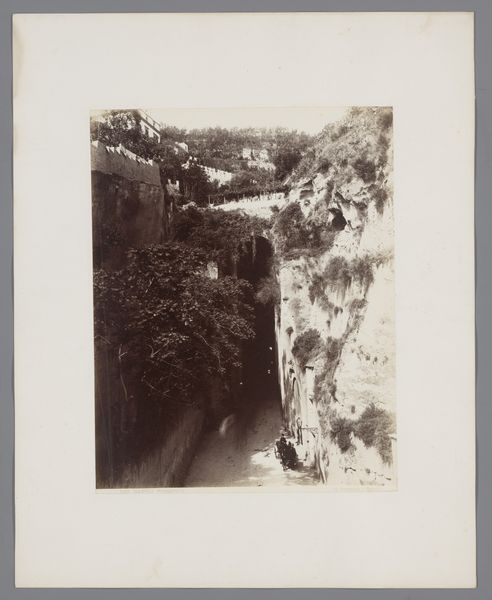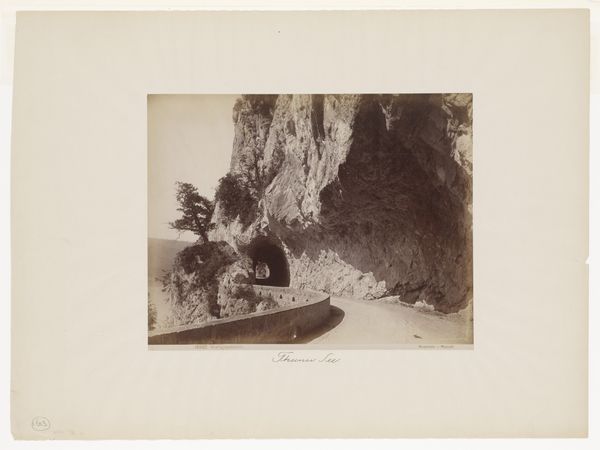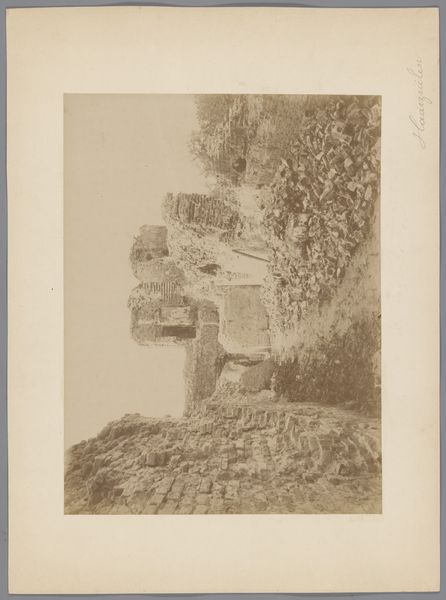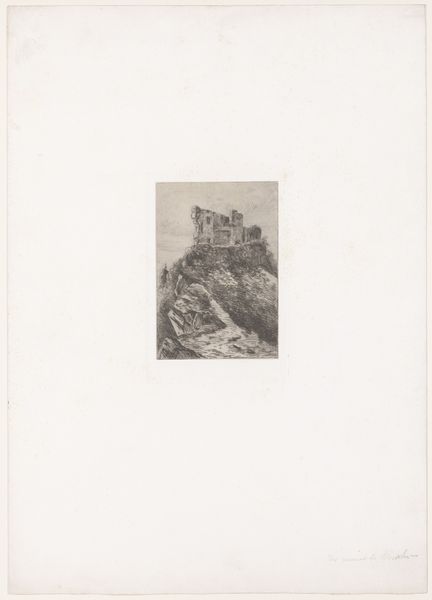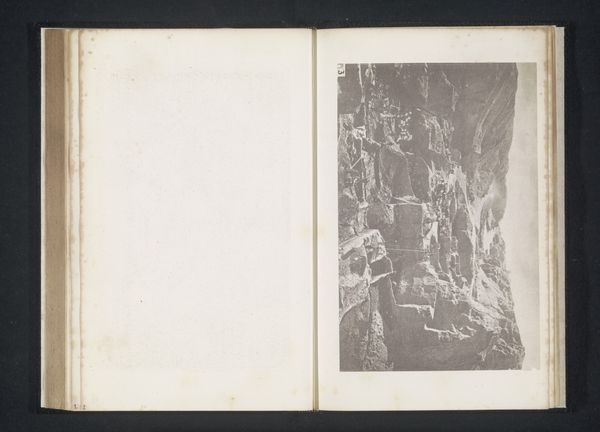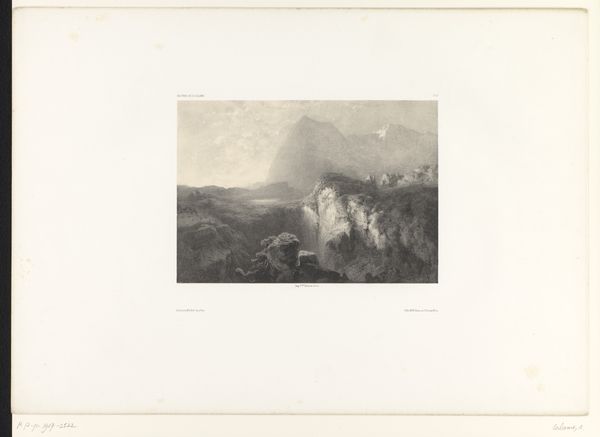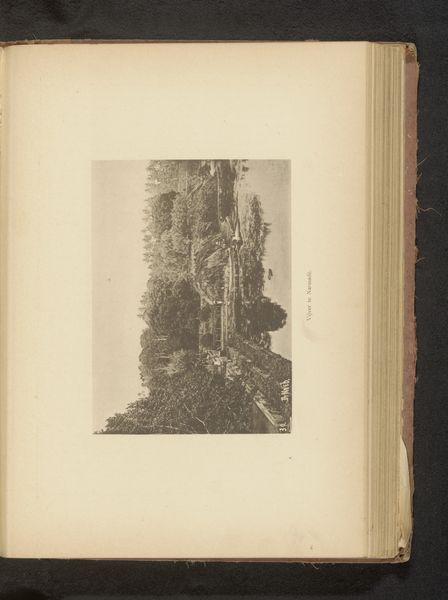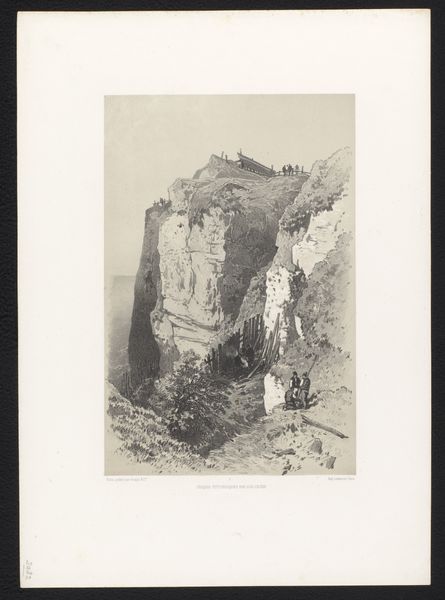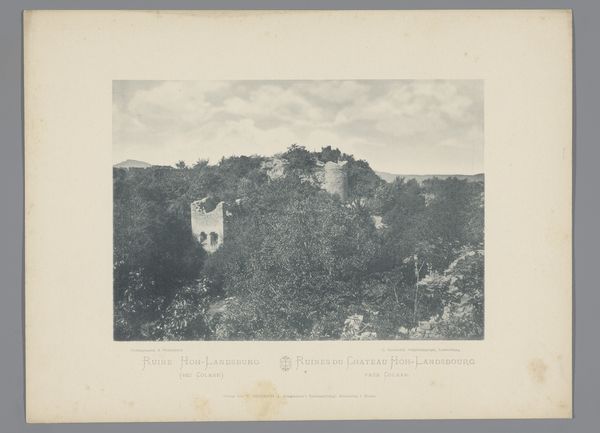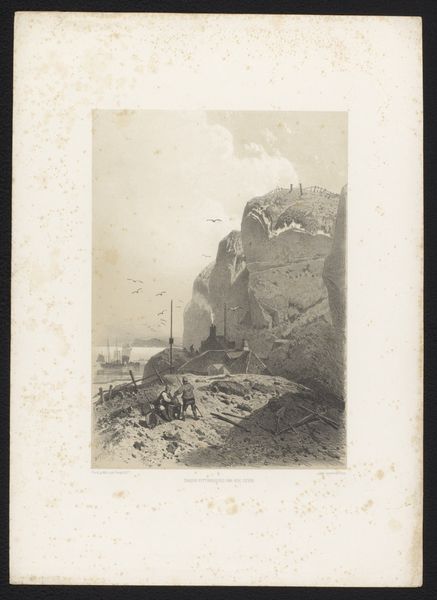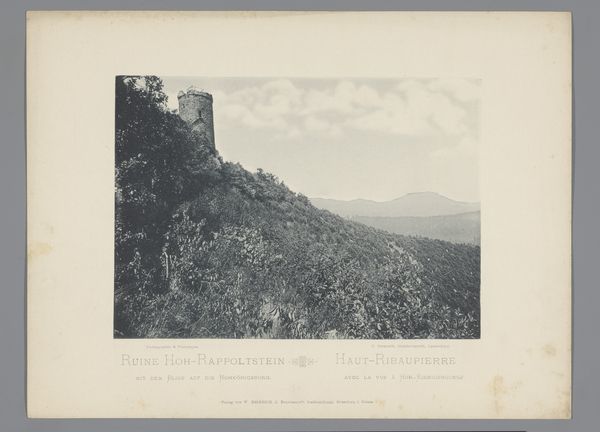
Gezicht op een stoomtrein op het spoor tussen La Guaira en Caracas in Venezuela before 1887
0:00
0:00
print, photography, gelatin-silver-print
#
still-life-photography
#
natural tone
# print
#
landscape
#
photography
#
gelatin-silver-print
#
tonal art
#
remaining negative space
#
realism
Dimensions: height 165 mm, width 136 mm
Copyright: Rijks Museum: Open Domain
Editor: This is a gelatin-silver print by Jacobus Rudolphus Neervoort van de Poll, titled "Gezicht op een stoomtrein op het spoor tussen La Guaira en Caracas in Venezuela," dating to before 1887. It strikes me as a really dramatic composition, how the train clings to the cliffside. What catches your eye? Curator: Initially, the tonal relationships impress. Note the almost monochromatic palette and how the values—ranging from pale creams to near blacks—define form and space. Consider the arrangement of these tonal masses; how does the artist orchestrate our gaze through these careful gradations? Editor: I see what you mean about the tones guiding the eye. So, you're focusing on how the blacks, whites, and greys interact within the frame itself? Curator: Precisely. It's tempting to focus on the represented subject, the locomotive, but the artist has skillfully manipulated the photographic medium to achieve a dynamic composition. The stark contrast of the steam against the dark rock, for instance, creates a visual tension. How does that tension affect the overall reading of the piece, would you say? Editor: It emphasizes the power of the engine and almost suspends it there, maybe highlighting the contrast between technology and nature. What do you make of the 'remaining negative space' as the AI tags suggest? Curator: An astute observation. The strategic use of the blank space around the image functions as a border, framing and isolating the scene. The eye is drawn back into the photographic information. What has remained unsaid in some ways is as powerful as the marks made by the artist in the photographic exposure. Editor: That's fascinating; I had not considered that before. Thanks for walking me through your way of thinking and that I can see how focusing on formal elements changes my perspective. Curator: Indeed. Close formal examination refines our seeing and appreciation, enriching engagement beyond the subject portrayed.
Comments
No comments
Be the first to comment and join the conversation on the ultimate creative platform.
